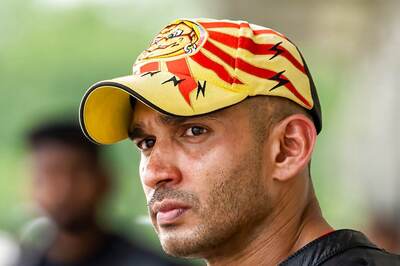
views
London: What could be the world's earliest example of a question mark has been identified in Classical Syriac manuscripts dating from the 5th Century.
The symbol, a double dot resembling the modern colon, is known as the "zagwa elaya," or "upper pair." Its function as a question mark was pinned down by Chip Coakley, a manuscript specialist at Cambridge University.
By studying the biblical manuscripts at the British Museum in London, Coakley was able to solve the mystery of the two dots, which has puzzled grammarians for decades, and described his finding as a "significant footnote in the history of writing."
"When you are sitting round a table reading a Syriac text with students, they ask all kinds of questions -- like what the heck does this or that dot mean -- and you want to be able to answer them," said Coakley.
"It's satisfying to have made sense of some of those weird dots."
Although the zagwa elaya is discussed in later grammatical tracts, it was not identified correctly, Coakley told Reuters.
"Later grammarians did talk about it but did not really know how it was used. They thought it indicated sarcasm or reproof, which turns out to only be partly true.
"I went back to the earliest manuscripts in the British Library to see how the zagwa elaya was used there. These were manuscripts later grammarians did not have access to."
Coakley's discovery that the zagwa elaya may in fact be a question mark identifies Syriac as the first language to use punctuation as a grammatical indicator of a question.
"Other languages, such as Hebrew, use particles to mark questions but in Classical Syriac we see the sagwa elaya as a grammatical marker," Coakley said.
The zagwa elaya is written at the start of declarative sentences to indicate their function as questions, something which would otherwise be ambiguous.
It is not used in questions with interrogative words, the equivalents of "wh-words" in English.
This is significant for theories of how the ancient language might have sounded, said the researcher.
"Reading aloud, the same function is served by a rising tone of voice -- or at least it is in English -- and it is interesting to ponder whether zawga elaya really marks the grammar of the question, or whether it is a direction to someone reading the Bible aloud to modulate their voice," Coakley said.
Syriac is thought to have appeared in the Middle East from the 1st Century and boasts a large Christian literature. It declined as a spoken language with the arrival of Islam and Arabic and today is only used in churches.



















Comments
0 comment